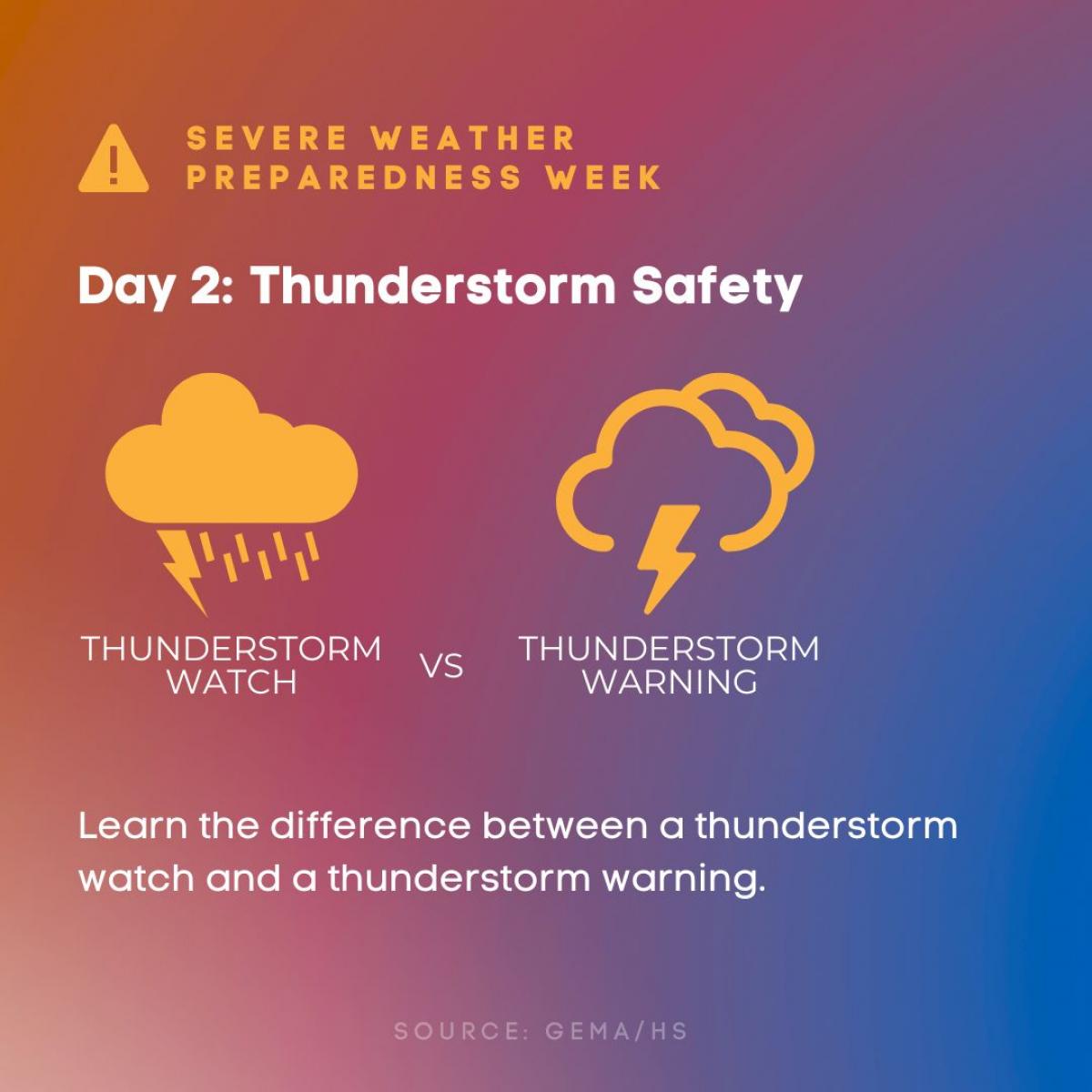Day 2: Thunderstorm Safety

Georgia’s greatest threats from severe thunderstorms are damaging straight-line winds and large hail. Straight-line winds can reach speeds in excess of 58 mph and produce damage similar to a tornado. These winds occur about 75 days per year in Georgia and are most common in the spring and summer months, peaking in July.
Before A Thunderstorm
- Familiarize yourself with the terms that are used to identify a thunderstorm hazard, including understanding the difference between a severe thunderstorm watch and a severe thunderstorm warning.
- A severe thunderstorm watch means there is the potential for severe thunderstorms (damaging winds/large hail) to impact your area within the next 6 hours.
- A severe thunderstorm warning means a severe thunderstorm is occurring or will likely occur soon. If you are advised to take shelter, do so immediately.
- Note, a severe thunderstorm refers to a thunderstorm producing winds of 58 mph or greater, 1-inch (quarter) sized hail or larger, and/or a tornado. Although lightning can be deadly, severe thunderstorm watches and warnings are not issued specifically for lightning.
- Remove dead or rotting trees and branches that could fall and cause injury or damage during a thunderstorm.
- Know your lightning safety rules. For example, if you hear thunder or see lightning, go indoors. Stay indoors for at least 30 minutes after hearing the last clap of thunder.
- If thunderstorms are expected in your area, postpone outdoor activities.
- Secure outdoor objects that could blow away or cause damage.
- Shutter windows and secure outside doors. If shutters are not available, close window blinds, shades, or curtains.
During A Thunderstorm
- If there is a thunderstorm in the area, go quickly inside a home, building, or hard top automobile, if possible.
- If shelter is not available, go to the lowest area nearby.
- If on open water, get to land and shelter immediately.
- Listen to a battery-operated NOAA Weather Radio or radio for the latest updates.
- Avoid taking a shower or a bath during a thunderstorm. Plumbing and bathroom fixtures can conduct electricity.
- Do not use electrical items such as computers or television sets as power surges from lightning can cause serious damage.
- A corded telephone should only be used in an emergency, but cordless phones and cell phones are safe to use.
Things to avoid include:
- Tall or isolated trees or other tall objects
- Hilltops, open fields, the beach, a pool, a boat on the water, isolated sheds or other small structures in open areas.
- Anything metal — wires, metal fences, tractors, farm equipment, motorcycles, golf carts, golf clubs, and bicycles.
After A Thunderstorm
After the storm passes remember to:
- Never drive through a flooded roadway. Turn around, don’t drown!
- Stay away from storm-damaged areas to keep from putting yourself at risk from the effects of thunderstorms.
- Stay away from downed power lines and report them immediately to your local power company.
Source: GEMA/HSA
